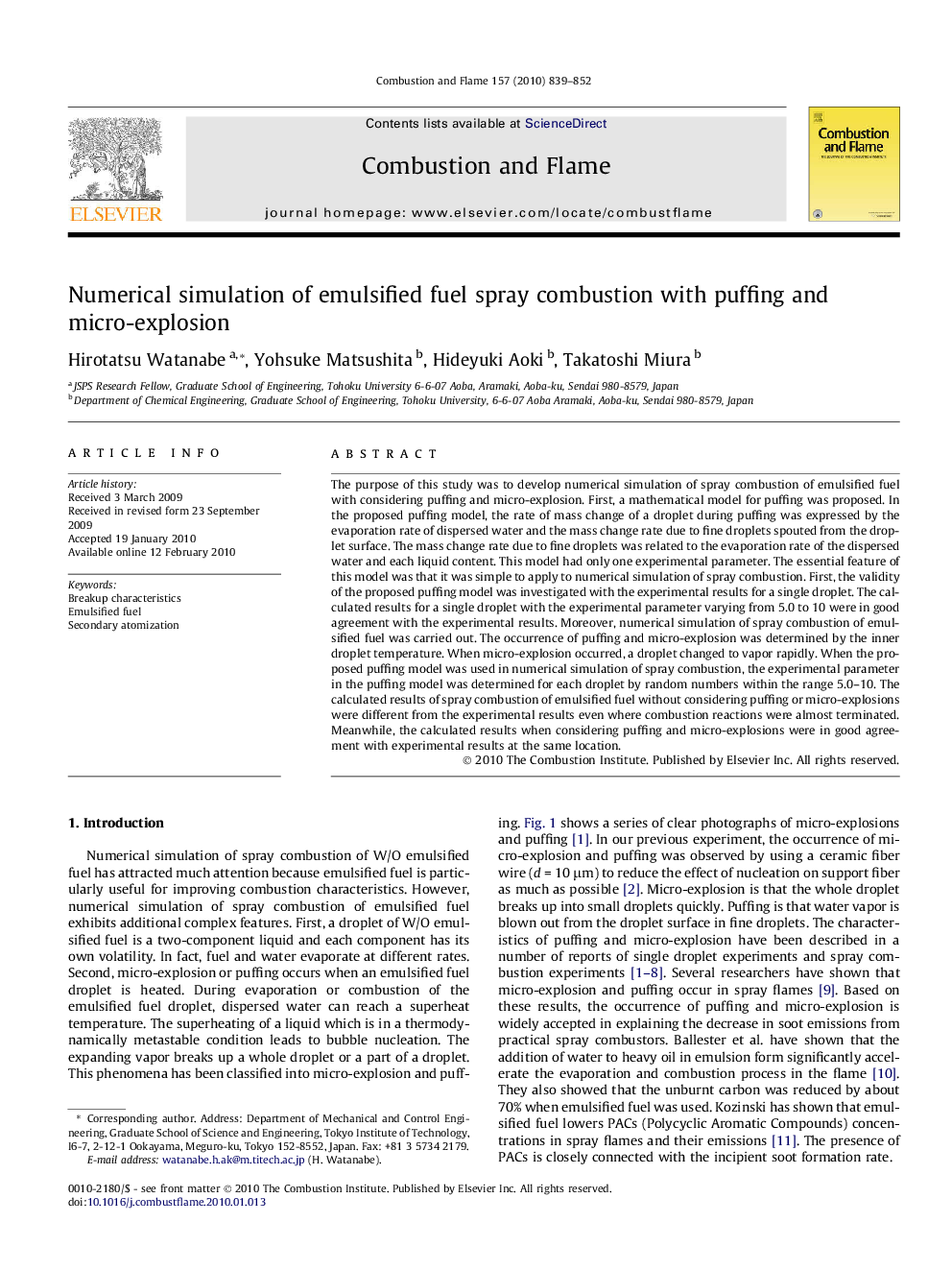| Article ID | Journal | Published Year | Pages | File Type |
|---|---|---|---|---|
| 169643 | Combustion and Flame | 2010 | 14 Pages |
The purpose of this study was to develop numerical simulation of spray combustion of emulsified fuel with considering puffing and micro-explosion. First, a mathematical model for puffing was proposed. In the proposed puffing model, the rate of mass change of a droplet during puffing was expressed by the evaporation rate of dispersed water and the mass change rate due to fine droplets spouted from the droplet surface. The mass change rate due to fine droplets was related to the evaporation rate of the dispersed water and each liquid content. This model had only one experimental parameter. The essential feature of this model was that it was simple to apply to numerical simulation of spray combustion. First, the validity of the proposed puffing model was investigated with the experimental results for a single droplet. The calculated results for a single droplet with the experimental parameter varying from 5.0 to 10 were in good agreement with the experimental results. Moreover, numerical simulation of spray combustion of emulsified fuel was carried out. The occurrence of puffing and micro-explosion was determined by the inner droplet temperature. When micro-explosion occurred, a droplet changed to vapor rapidly. When the proposed puffing model was used in numerical simulation of spray combustion, the experimental parameter in the puffing model was determined for each droplet by random numbers within the range 5.0–10. The calculated results of spray combustion of emulsified fuel without considering puffing or micro-explosions were different from the experimental results even where combustion reactions were almost terminated. Meanwhile, the calculated results when considering puffing and micro-explosions were in good agreement with experimental results at the same location.
